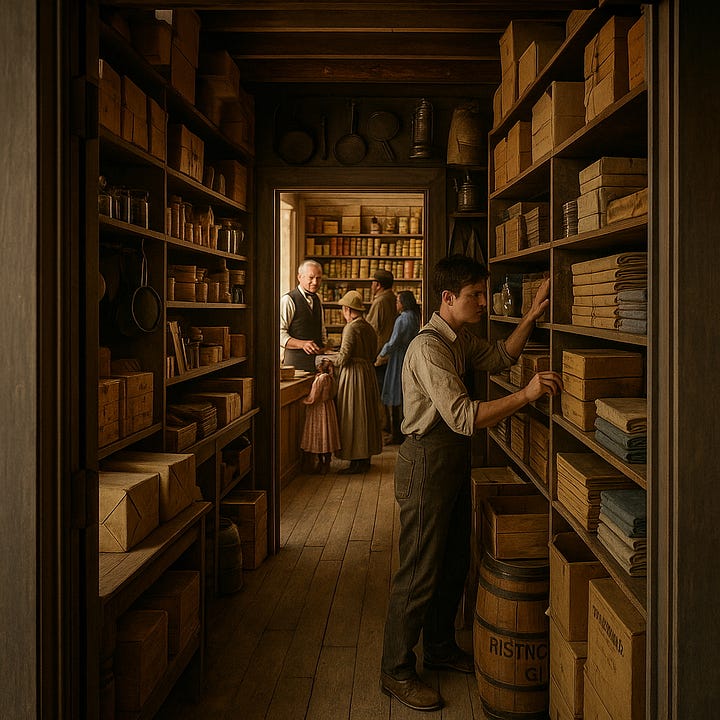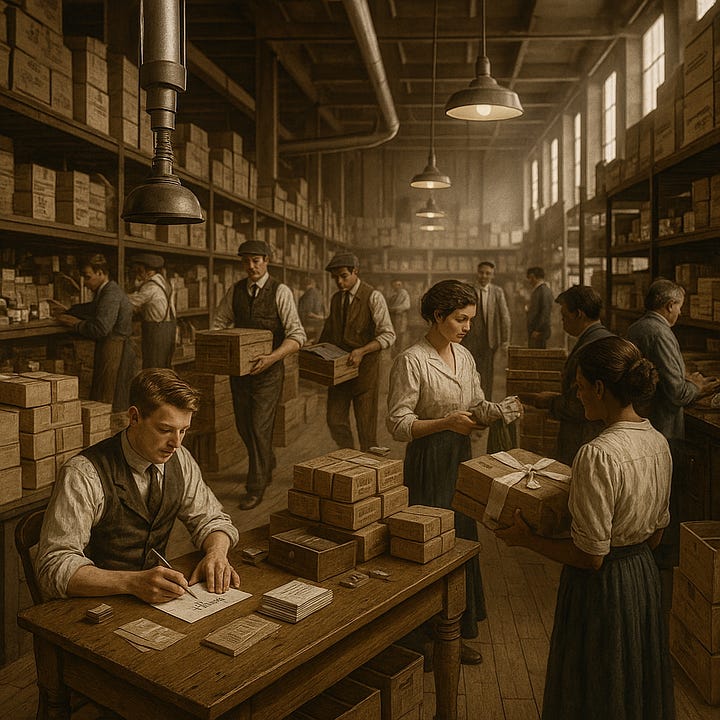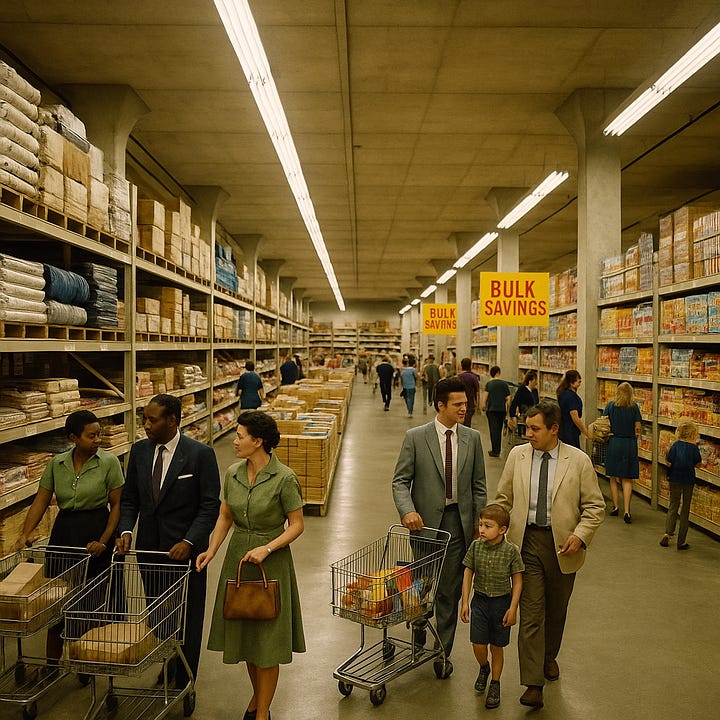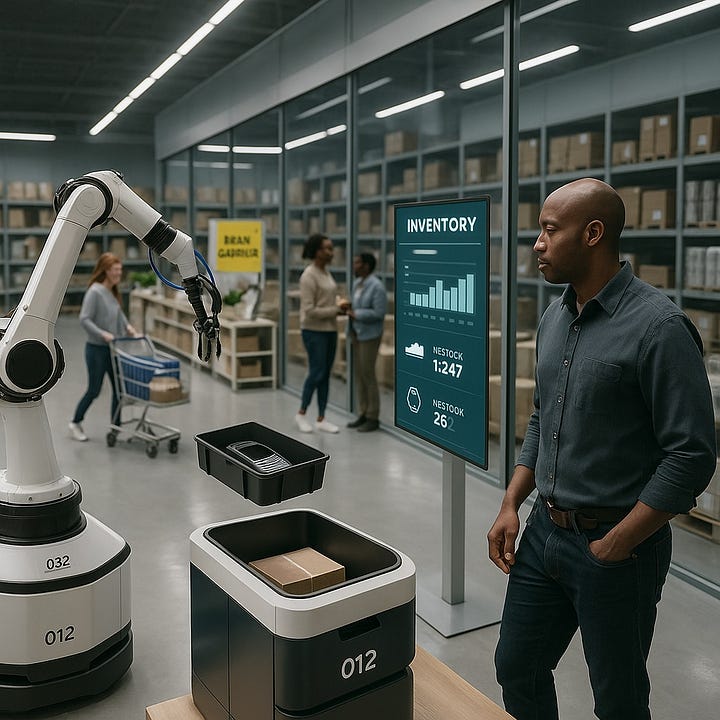🏷️ From Back Room to Front Stage: The Evolution of Stockrooms
Once hidden, overlooked, and purely functional - the humble stockroom now shapes every aspect of how we shop.
Stockrooms were once retail’s best-kept secret. Tucked away behind swinging doors, they were quiet, dusty warehouses - stacked high with merchandise, far from customers' eyes.
Today, they're central to retail strategy. But how did the stockroom move from hidden logistics to a critical, visible part of the customer experience?




📦 Where Did It Begin?
In the early 1800s, retail inventory management was simple: small-town general stores kept everything on shelves or hidden away in crowded back rooms. Customers requested items at the counter, and merchants retrieved goods from storage. Trust and patience were integral parts of the transaction.
But as commerce expanded, especially during the rise of urban department stores in the late 19th and early 20th centuries, stockrooms evolved from small closets into sprawling logistical hubs.
Stores like Macy’s and Marshall Field’s built extensive multi-level stockrooms. Employees used pneumatic tube systems and even early forms of conveyor belts to speed up delivery from stockrooms to the sales floor. Suddenly, inventory management wasn’t just storage - it was innovation.
🏬 The Great Reveal: Open Stockrooms & Self-Service
A dramatic shift happened mid-20th century with the rise of self-service and warehouse retailing. In 1956, Sol Price opened the first Price Club in San Diego - pioneering the warehouse shopping concept. Suddenly, customers could see stock openly displayed on massive shelves, where industrial storage became part of the shopping experience itself.
Then came IKEA in the 1960s, elevating stockrooms into showroom-stockroom hybrids. IKEA’s "open warehouse" concept deliberately blurred the lines between showroom and stockroom, integrating inventory directly into the customer journey. Picking products from warehouse shelves became part of the retail theatre, creating both efficiency and consumer engagement.
🤖 Today's Stockroom: Automated & Visible
Today, the once-hidden stockroom has gone fully digital and automated. Brands like Amazon and Walmart now utilize robotics, RFID technology, and AI-driven logistics that allow customers real-time visibility into inventory. Stockrooms have become high-tech command centers:
Robots autonomously sort, move, and track items.
RFID and IoT sensors provide live stock updates to apps and websites.
Omnichannel systems integrate online inventory seamlessly with in-store stock.
Retailers like Target and Zara leverage their inventory accuracy as competitive advantages, turning stock visibility into customer confidence.
👁️ Why Does It Matter?
The evolution of stockrooms from hidden rooms to front-facing, customer-aware systems isn't merely logistical - it reflects a deeper shift in consumer expectations. Shoppers now demand transparency, speed, and assurance that what they want is exactly where and when they want it.
Retail logistics are no longer a secret; they're part of the brand promise. Customers trust companies that share exactly what’s available and when - and reward them with loyalty.
🔄 The Echo Today
Today’s stockrooms echo their roots:
Direct-to-consumer brands like Warby Parker and Bonobos merge stockroom, warehouse, and showroom into one streamlined retail experience.
Grocery stores use automated fulfillment centers visible to shoppers through glass walls - showcasing transparency literally and figuratively.
Companies like REI display precise inventory levels online, allowing customers to confidently reserve products before even entering the store.
Stockrooms now directly shape the customer journey - from browsing, buying, delivery, returns, to customer service.
🕊️ What's the Lesson?
Inventory management was never just about storing items. It’s always been about shaping trust, anticipation, and satisfaction.
Retailers who master their stockrooms - and integrate them seamlessly into customer experience - aren’t just managing logistics. They're creating loyalty.
Because, in the end, the stockroom’s transformation from hidden backroom to strategic front-stage has taught us that logistics isn’t just operational - it’s emotional.
Inventory isn’t just goods on shelves - it’s trust in action.
🕰️ Echoes of Commerce




